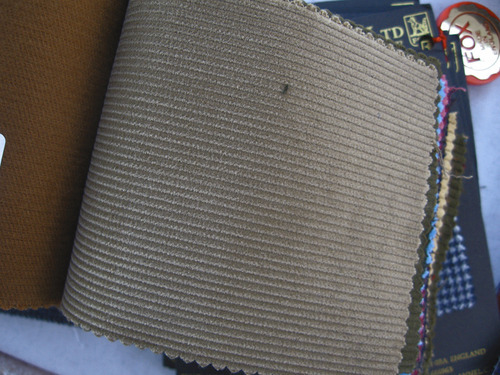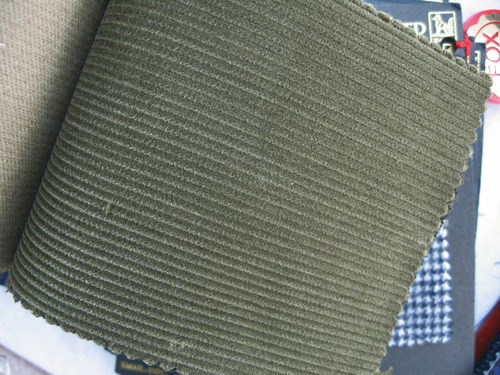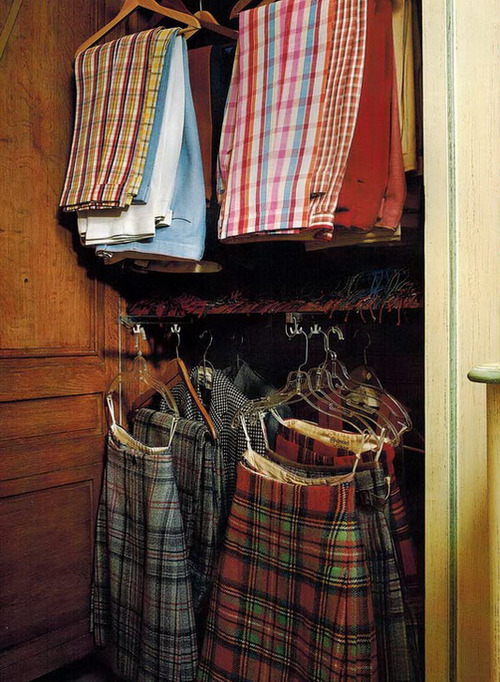
Some people try to improve their lives in really admirable ways – such as with every New Years, they make resolutions to lose weight, quit smoking, or save money. One of my resolutions this year is to build a new pants wardrobe. It’s admittedly silly and trivial, but on the upside, since it requires no sacrifice or discipline on my part, I’m likely to actually meet it.
The problem with off-the-rack pants, I find, is that even with a good cut, it can be hard to get the back to fit well. That’s because so much depends on how you stand. If you stand with your hips forward and knees locked – like an auditioning porn star, as my friend David put it – then your pants will crumple under the seat and ripple through the back of the leg. It’s a minor thing, but once you get obsessive about how clothes fit, it’s hard to not let these things bother you.
So earlier this year, I resolved to replace all my trousers through my tailor, and in doing so, I’ve had to think about what pants might be necessary in a good, basic wardrobe. Not to say this is what everyone needs, of course. Only me. But perhaps if you wear sport coats often, you’ll find some of these suggestions useful.
First, there are your year-round cloths, which can start with chinos. I like darker shades of khaki over mid-shades, and find dark- to mid-shades of olive green to be very useful as well. On one of Steed’s visits here, I was able to flip through some Dugdale cotton swatches, which I thought were really good (below is a nice shade of navy in a subtle twill weave, which I’ve always preferred over plain-weaves or drills). Zegna and Brisbane Moss also have great cottons, and I’ve heard good things about Drapers.
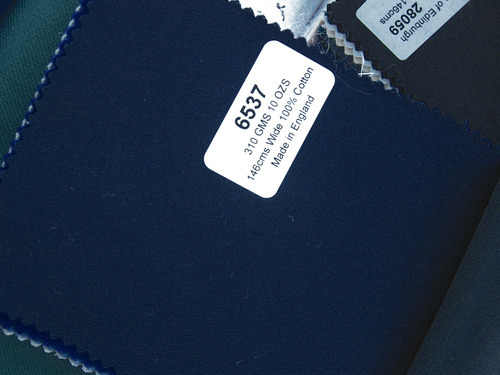
For dressier trousers, there’s flannel, which is good for at least three-seasons. A worsted flannel will be harder wearing, while a woolen flannel will be better looking. I’d suggest getting them in mid-grey, light grey, and fawn (a light brown color close to khaki). There’s also charcoal, but I’ve found dark colored pants difficult to wear, if only because tailored jackets are typically dark, so pants are easier to wear when they’re light. You can get good flannel from Minnis, Fox, and Harrisons.
Additionally, there are some excellent four-season wools in Harrisons’ Frontier book. Below are some nailheads that caught my eye (similarly, check out how nice these salt-and-pepper trousers look). I imagine some of the solid colored fabrics here – in your basic light- to mid-shades of grey, as well as dusty khakis – would make for some excellent year-round pants as well.

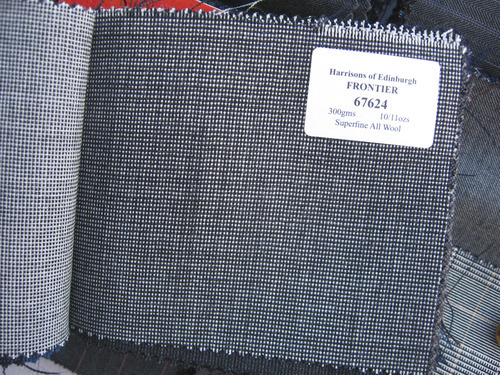

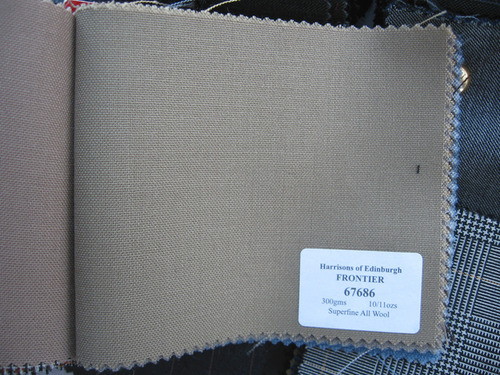

Having some flannels, non-suity wools, and chinos are arguably all you need in basic wardrobe, but it’s nice to have a few seasonal options as well – if not for comfort, then at least for the joy of dressing.
For spring and summer, I like linen, particularly in tan, cream, and tobacco brown. W. Bill is an excellent source for densely woven linens, while Harrisons’ Mersolair and Brisbane Moss have some nice open weaves. From memory, I believe the Brisbane Moss stuff is very lightweight. If you want dense, heavy-as-a-rock linens, ask your tailor if he or she carries any of the London Lounge books.
There are also tropical wools, which is a class of lightweight, open weave wools that breathe well in the summertime. Minnis’ Fresco is a popular choice, but I find the material to be too scratchy for trousers. Smith’s Finmeresco work just as well, but feel more comfortable against the skin. Here’s a mid-grey with a bit of mixture in the yarns in order to give the fabric some visual depth.
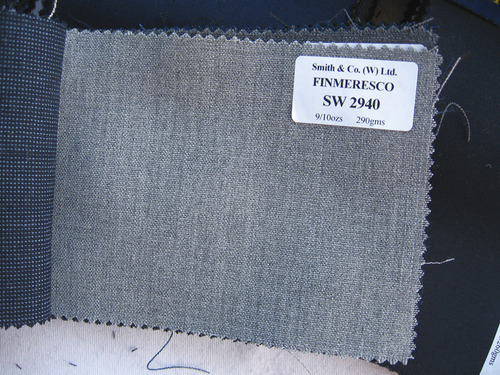
For fall and winter, there are some beautifully textured tweeds from Abraham Moon. Below are some browns and greys that I thought would make nicely into pants. There are also some cavalry twills from Dugdale and Bateman, both of which have that essential shade of tan that would look good with brown tweeds and green Barbour jackets.

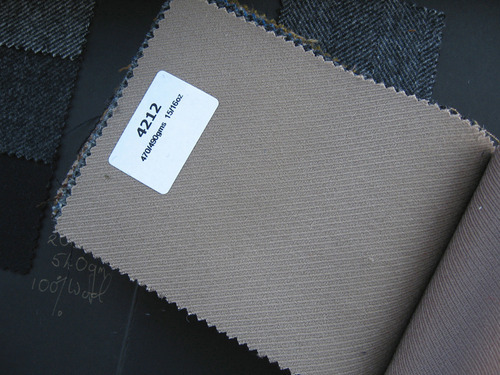
Finally, there are corduroy and moleskin trousers, which look great when the weather turns cold. Brisbane Moss and Eskdale are great sources for such fabrics. The best moleskins are obviously brown, while corduroy seems to do best in either wheat or dark brown. There are also olive green corduroys, which – while daring – look surprisingly good with certain tan gun club sport coats. I can’t imagine getting those for a while, though. The other fabrics above should keep me busy for a while.


